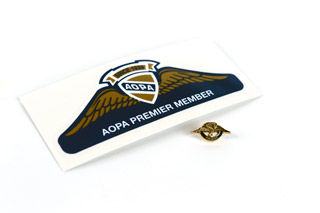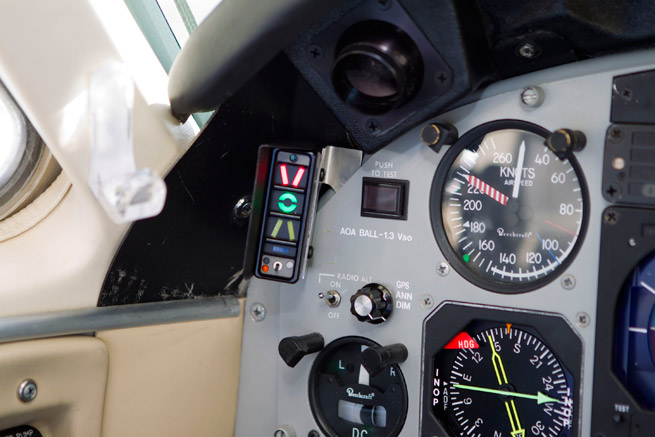Member Services
AOPA Plus membership is now AOPA Premier
Our best AOPA membership just got a whole lot better
 For years, thousands of AOPA members have enjoyed the extra benefits and services provided through AOPA Plus. Now, AOPA Plus is AOPA Premier—but we’ve changed a lot more than the name. We’ve added even more value, and more savings, all in an affordable membership package.
For years, thousands of AOPA members have enjoyed the extra benefits and services provided through AOPA Plus. Now, AOPA Plus is AOPA Premier—but we’ve changed a lot more than the name. We’ve added even more value, and more savings, all in an affordable membership package.
More benefits:
• AOPA Premier Member lapel pin and decal specially designed to recognize your extra support for our freedom to fly.
• Complimentary digital subscription to your primary magazine—either AOPA Pilot or Flight Training.
• Advance screening of AOPA Air Safety Institute online courses.
• 10 additional sweepstakes entries (see official rules on the website).
More savings:
• 10 percent discount on AOPA Pilot Protection Services/Legal Services Plan.
• 10-percent discount on apparel items at the AOPA Online Store with a minimum purchase of $25.
• Exclusive discounts and special offers from manufacturers and retailers, delivered straight to your email.
More services:
• Priority access to the AOPA Pilot Information Center’s staff of aviation specialists through a dedicated phone line and email address.
• AOPA Navigator one-on-one concierge service, connecting you with an AOPA representative to provide personal assistance for all of your membership needs.
• Advance notice of upcoming AOPA educational seminars and webinars.
• Invitations to local and regional events with AOPA leadership and your fellow pilots.
As an AOPA Premier Member, your dues help support critical AOPA efforts to strengthen our advocacy efforts, win key political battles, and share our aviation dream with local citizens and the next generation of pilots.
Visit www.aopa.org/aopapremier or call 800-USA-AOPA (872-2672) to join or upgrade your membership.
Plus, enjoy a special sign-up gift—a free AOPA Airports Directory (a $39.95 value) .
Food for thought
With all of the controversy over the FAA’s sleep apnea issues, I thought I would throw out some data to keep you thinking. I obtained this data from the Aerospace Medical Certification’s 2011 Statistical Handbook. This data was pulled from the FAA’s Document, Imaging, and Workflow (DIWS) system. That’s the computer program that the FAA uses to work the medical examinations that all pilots must obtain. It has all the pilots’ examinations in electronic format. The FAA flight exams that your AME performs are input into this system.
As of December 31, 2011, there were a total of 39,191 females and 555,627 males with current medical certificates. This data included all classes of medical certificates. You have been hearing about the BMI (body mass index) as the calculation on which the FAA planned to base its OSA (obstructive sleep apnea) policy. The mean BMI for females was 24.2 and males 27.2. The “mean” is a statistical measure of central tendency. The actual definition of the “mean” is the sum of all values in a series divided by the number of actual values. The FAA wants your AME to calculate your BMI each time you come in for an examination.
For all classes of airmen, the mean weight for females was 147.6 pounds and males 192.8. Since we deal mostly with private pilots or third class airmen, the mean weight for third class females was 148.4 and males 193.9.
The FAA defined an “overweight” airman as one whose BMI was between 25 and 29.9 and an “obese” airman was a BMI greater than 30. So, as of December 31, 2011, there were 8,879 females of all classes who were in the “overweight” category and 4,078 in the “obese” and 255,488 males in the “overweight” and 124,973 in the “obese” groups. As far as the third class overweight category, there were 4,789 females and 115,692 males. The “obese” third-class had 2,193 females and 61,449 males.
Dr. Warren Silberman is the former manager of FAA Aerospace Medical Certification and a doctor of osteopathic medicine. A pilot since 1986, he is recognized nationally as an expert in aerospace/preventative medicine.
Insurance Services
Flying club insurance
Spring will be here before you know it, and now is the time to set up that flying club. Most clubs have from three to 25 active pilots per airplane, the aircraft are generally equity owned, and are set up under a holding company. LLCs are the most common legal entities and, in addition to the legal and tax advantages, registering an aircraft under an LLC also means the club will not have to re-register every time the club membership changes.
I recommend that a club has sufficient insurance to meet the requirements of the club member who needs the greatest protection. Clubs often find that such coverage limits are not easily available, especially when the club includes lower-time pilots. However, AOPA has recently developed an innovative means to increase the protection of those individual club members needing higher liability coverage limits. Also, the new club policy includes very broad territorial limits; coverage is now available for some multiengine aircraft; and, for the first time, “for profit” clubs can obtain this same broad protection.
Flying club insurance rates are influenced by many factors, but the most important include the make and model aircraft; the insurance coverage limits needed (including aircraft value and liability limits); the number of members per aircraft; the ratings, experience, and claim experience of members; aircraft location (hangared or tied down); and any expanded coverage needed (clubhouse or hangar protection, aviation event and contest coverage, extra equipment and tools, etc.). Clubs operating retractable-gear or high-performance aircraft, or needing significant expanded coverage (such as insurance protection for a club-owned private airfield), should expect to pay higher insurance premiums.
The most commonly requested club quote is for three to four pilots, with a Cessna 152, 172, or PA–28. For example: a Cessna 172 with a $50,000 hull value, hangared, and three pilots, with the lowest time a 100-hour private pilot. Based on liability limits of $1,000,000 each occurrence/$100,000 per passenger and full ground and flight hull insurance, this new club would pay about $818 the first year, or about $23 per member per month. If the club adds a fourth partner the rate drops to $21 a month.
Bill Snead is an aviation insurance professional with more than 35 years of experience.
Answers for pilots
Time to start a flying club?
Find encouragement and practical guidance on forming a flying club with AOPA’s online Guide to Starting a Flying Club. It includes detailed information on getting started, from understanding FAA guidance to setting a budget, selecting an aircraft, marketing your club, understanding insurance, and more. Read more about it in this month’s Answers for Pilots (www.aopa.org/Pilot-Resources/Answers-for-Pilots.aspx).
By Bill Snead, President, AOPA Insurance Services
More information is available online, or by calling AOPA Insurance Services at 800-622-AOPA (2672).
 Safety experts have identified the angle-of-attack indicator—a device on the instrument panel that tells the pilot he is about to have an aerodynamic stall—as something that could greatly improve general aviation safety. The FAA will simplify design approval requirements for the device, and opened an intriguing door to additional such systems at the same time. The FAA said the action could lead to streamlined approval of other add-on systems in the future.
Safety experts have identified the angle-of-attack indicator—a device on the instrument panel that tells the pilot he is about to have an aerodynamic stall—as something that could greatly improve general aviation safety. The FAA will simplify design approval requirements for the device, and opened an intriguing door to additional such systems at the same time. The FAA said the action could lead to streamlined approval of other add-on systems in the future.  ASN volunteer Bill Quinlan and his fellow pilots know that persistence and community involvement are imperative to an airport’s future. The Lakes of the North Airport (4Y4) in Gaylord, Michigan, is a privately owned, public-use facility in a resort community and is faced with many of the same challenges as airports across the country.
ASN volunteer Bill Quinlan and his fellow pilots know that persistence and community involvement are imperative to an airport’s future. The Lakes of the North Airport (4Y4) in Gaylord, Michigan, is a privately owned, public-use facility in a resort community and is faced with many of the same challenges as airports across the country. Distractions while flying can be hazardous, often forging one of the most dangerous links in an accident chain. Want to know more? Fly along with the Air Safety Institute “
Distractions while flying can be hazardous, often forging one of the most dangerous links in an accident chain. Want to know more? Fly along with the Air Safety Institute “

